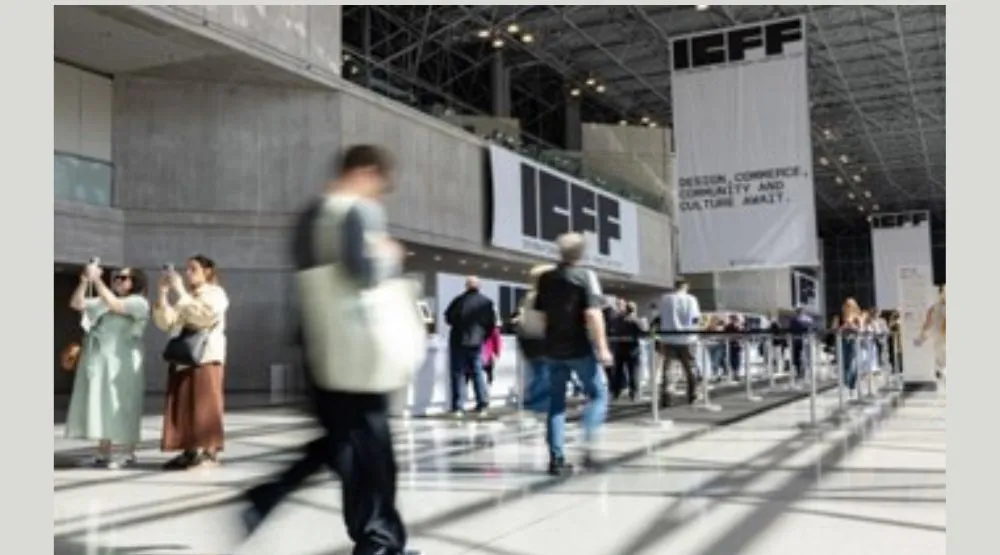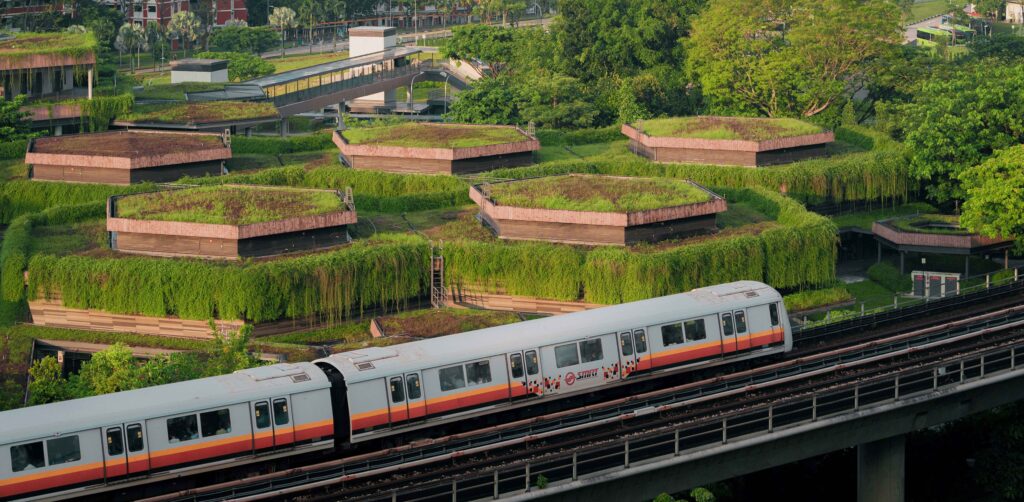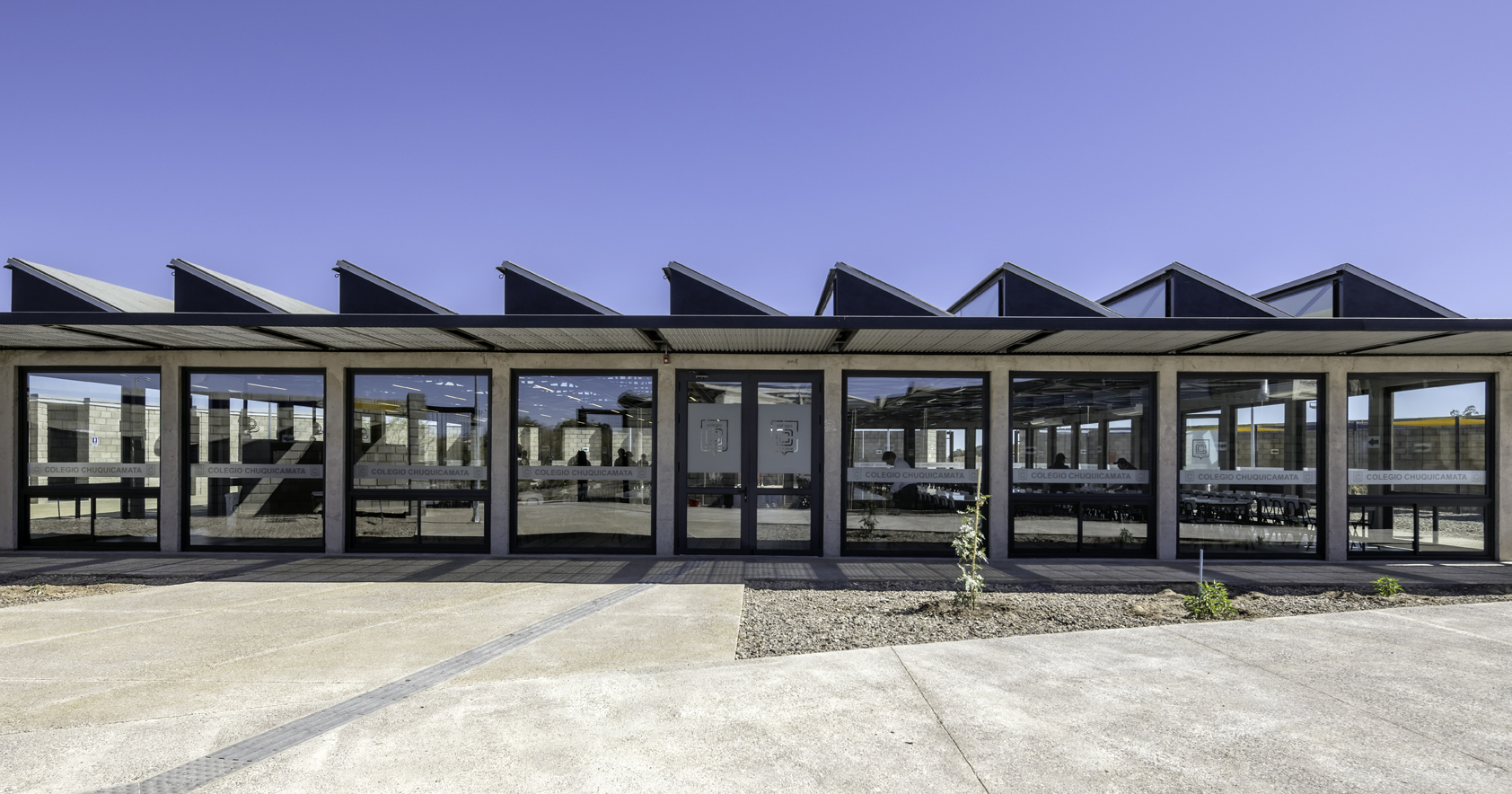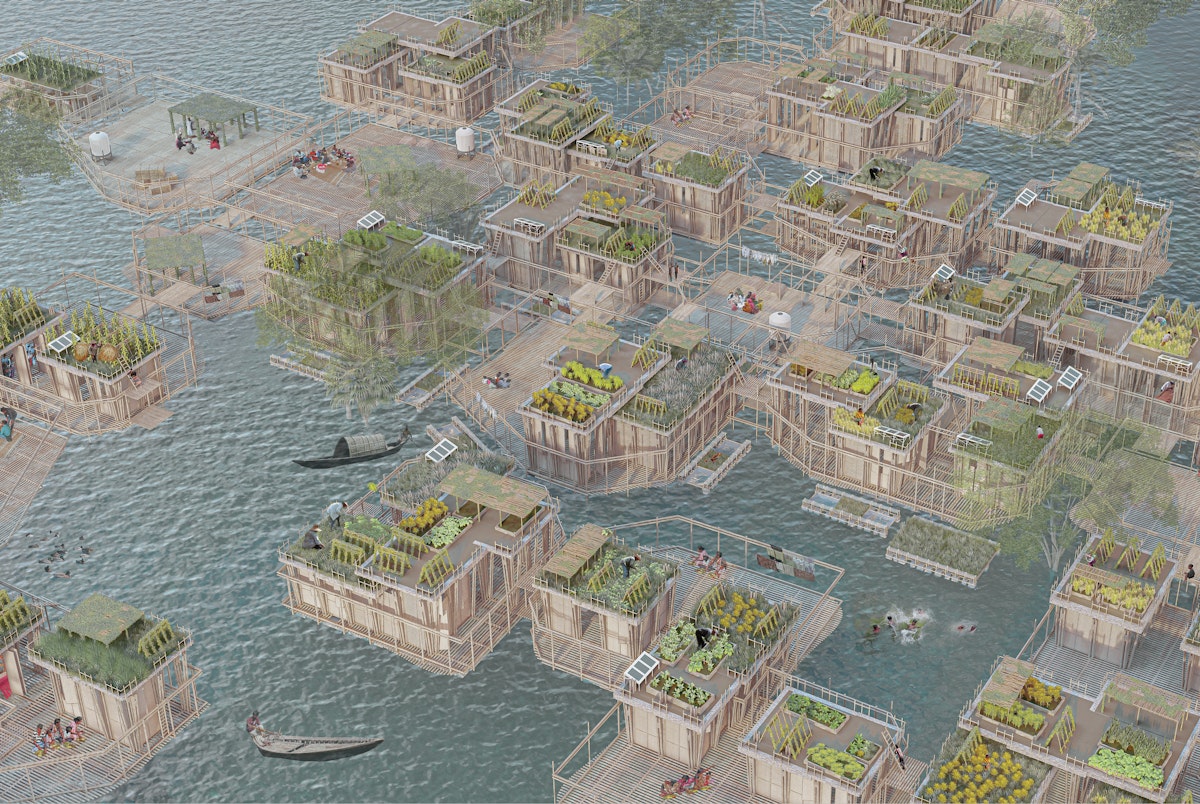Origami Architecture: Is This The World’s Most Beautiful Pollution Monitor?

The winners of the 13th Architizer A+Awards have been announced! Looking ahead to next season? Stay up to date by subscribing to our A+Awards Newsletter.
Situated at the estuary of the Yangtze River, Shanghai is known for a number of things. The world’s busiest port, China’s leading financial hub, vibrant nightlife, world-class shopping and, in some areas, stunning art deco buildings. All are highly vulnerable to climate change, and sea level rise in particular.
With streets an average of just 13 feet (4 meters) above the region’s mean tidal height, people living in Asia’s biggest city have long understood their susceptibility to flooding. The tropical location doesn’t help, with 2024’s monsoon season raising the most devastating storm to hit the metropolis in 75 years. These are predicted to become more frequent.
Bebinca was only the third typhoon to make landfall in Shanghai since 1949. Reaching wind speeds of 94mph (150 kph) — just slower than a category 2 hurricane — 400,000 people were evacuated across southeastern China. And within minutes, infrastructure in Shanghai began struggling to cope, a clear sign of just how much urban planners need to think about the future.
The local government has several ideas to try to mitigate the impact of future storms such as this. One of which is the creation of sponge parks, like the Lin’gang Starry Sky Theme Park. The largest in Shanghai, it covers 130 acres (54 hectares), including 40 acres (16 hectares) of water, and features permeable pavements, rainwater purification and storage systems, and infrastructure for ecological purification and water replenishment. This means downpours can be captured and then slowly released when required. Meanwhile, extensive greening — including native plants and trees and ‘exotic species’ such as the North American Begonia, Oriental Cherry, and Canary seaweed — adds yet more capacity to absorb precipitation.
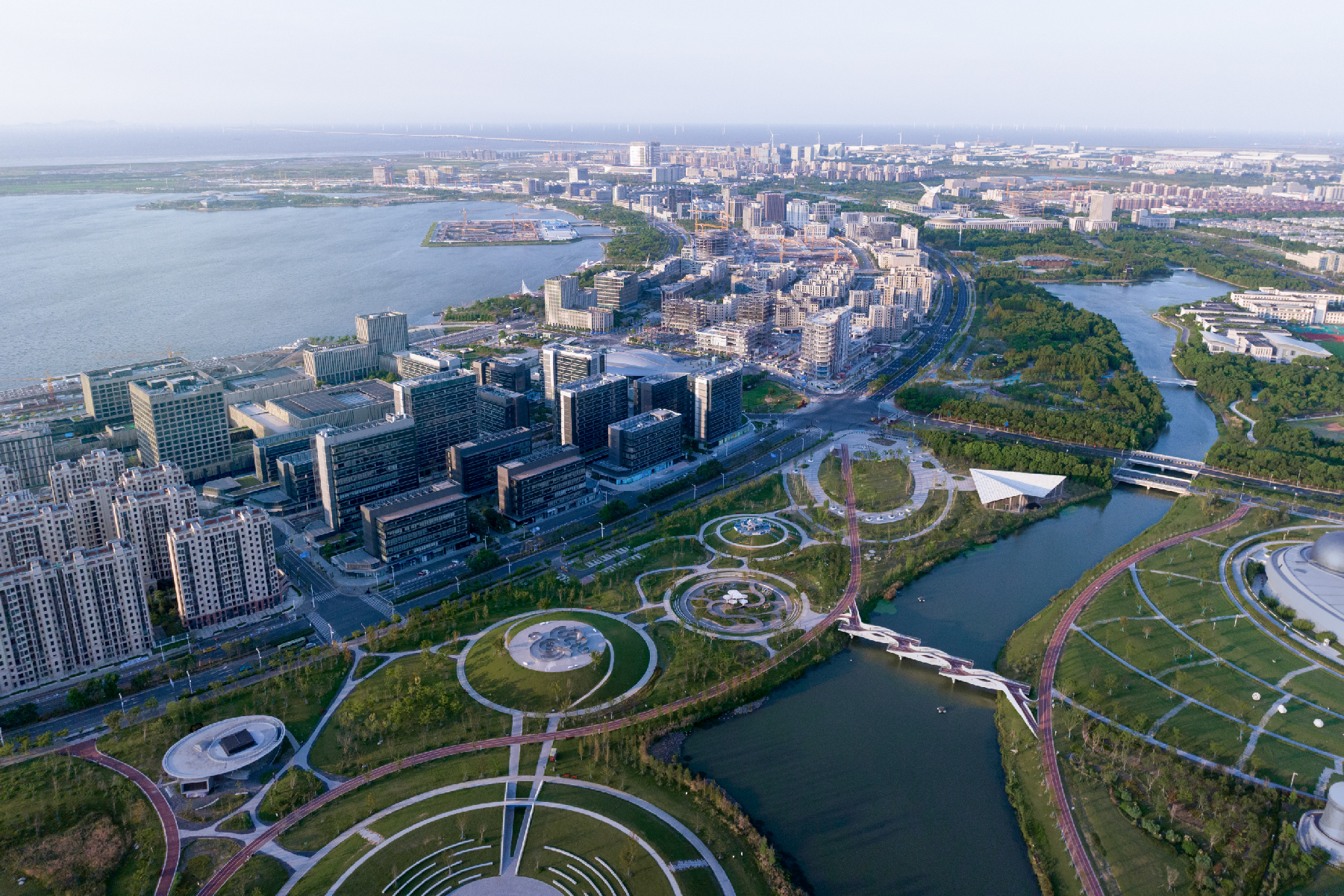
Zero-Carbon Origami Airplane by China Architecture Design & Research Group, Shanghai, China | Jury Winner, Sustainable Cultural Building, 13th Annual A+Awards
It’s amongst all this that we find the Zero-Carbon Origami Airplane. Completed by the China Architecture Design & Research Group in 2022, one year after the park opened, this visitor centre and cultural pavilion makes a big impression inside and out. Sitting on the edge of a body of water, tree planting and sunken lighting on the pedestrianized paths leading to the entrance create an inimitable approach route. Internal areas — visitor reception, lecture hall, exhibition and conference spaces — are divided by height, and provide a striking home for diverse activities which is coherent but clearly delineated.
The theme of altitude continues when looking at the CADG project from above, too. The ‘folded’ roof is made to look like a paper plane, and this unique shape serves more purposes than aesthetics alone. BIPV solar panels are seamlessly integrated and provide 107% of the building’s energy requirement. Electricity use is further reduced through natural ventilation, cutting the need for air conditioning, while huge floor-to-ceiling windows encourage as much daylight into the internal spaces as possible. A footprint has been reduced in numerous ways.
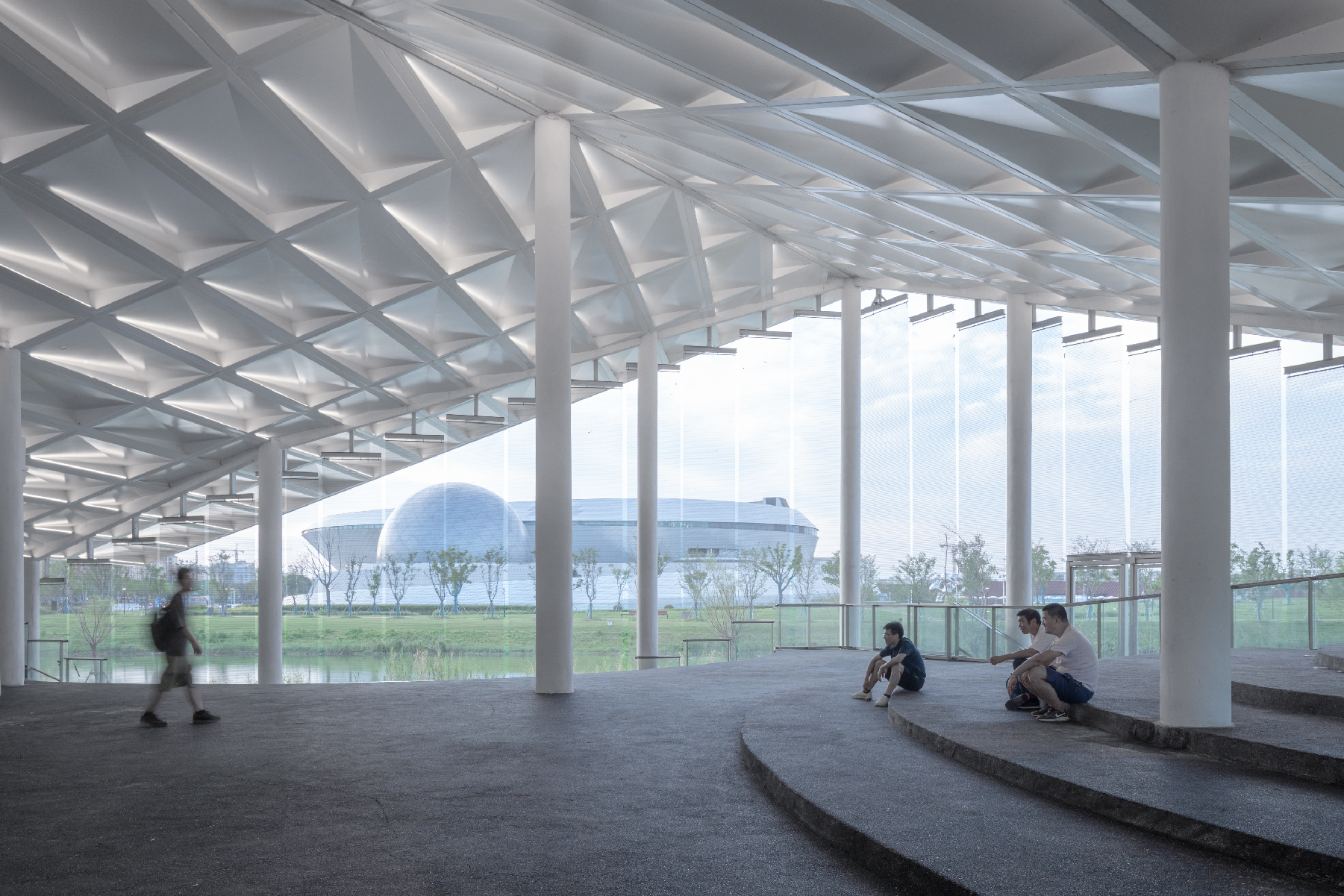
Zero-Carbon Origami Airplane by China Architecture Design & Research Group, Shanghai, China | Jury Winner, Sustainable Cultural Building, 13th Annual A+Awards
Collectively, these elements make the Origami Airplane zero-carbon and energy positive, something even more remarkable when you take into consideration the monitoring and measurement technologies it also features. Suppose the parkland outside was designed to help prepare a city for a future in which the weather will be more unpredictably ferocious. In that case, the centre’s internal workings are geared up to protect staff working in the office and visitors alike.
Sensors for temperature and humidity are included, alongside devices that can read levels of dangerous gases and other pollutants in the air. This includes carbon dioxide and total volatile organic compounds (TVOC). The latter is particularly forward-thinking, considering this usually refers to measurements of indoor air quality, an issue that still flies under the radar within many organizations and workplaces. Other than industrial sectors, which need to be heavily regulated because workers are exposed to high levels of toxic emissions in everyday production processes.
Often considered to be the most significant air quality threat, PM2.5 — fine particulate matter — is also monitored. This refers to any solid or liquid droplet smaller than 2.5 micrometers in diameter. Easy inhaled into the lungs, and then absorbed into the bloodstream, researchers have identified the presence of these tiny pieces of pollution in everything from the human brain to the liver and bladder, with mounting evidence about its contribution to chronic and terminal conditions like heart disease and cancer.

Zero-Carbon Origami Airplane by China Architecture Design & Research Group, Shanghai, China | Jury Winner, Sustainable Cultural Building, 13th Annual A+Awards
Although China’s capital, Beijing, was for many years considered the smoggiest city on Earth, for the past five years or so, Shanghai has recorded significantly higher levels of the most deadly pollutants. And it’s not alone. The World Health Organization currently links around 4.2million worldwide deaths to PM2.5 annually, and even countries like the UK — with a decades-long history of cutting air pollution — are recording some 30,000 fatalities due to these particles each year.
Throughout Architizer’s Sustainability series, we have looked at a number of ways in which practice can be sustainable and redefine how we build in a bid to reduce environmental footprints. Articles have also looked at structures that overcome dangers posed by the landscape itself and increasingly severe weather systems. In contrast, CADG’s Origami Airplane is a compelling example of a blueprint that also includes elements that inform the public about threats in the atmosphere, allowing them to adjust behavior accordingly — for instance, by not going outside during a pollution spike — while fresh air handling units respond by increasing supply when toxicity is high. A sad, but highly sophisticated indictment of our age.
The winners of the 13th Architizer A+Awards have been announced! Looking ahead to next season? Stay up to date by subscribing to our A+Awards Newsletter.
The post Origami Architecture: Is This The World’s Most Beautiful Pollution Monitor? appeared first on Journal.










![Tanpopo Restaurant / TRAIL [practice]](https://images.adsttc.com/media/images/6942/797e/c3f4/d500/0127/6d68/medium_jpg/1497_TANPOPO___Margarita_Nikitaki_3000px.jpg?1765964192#)




















